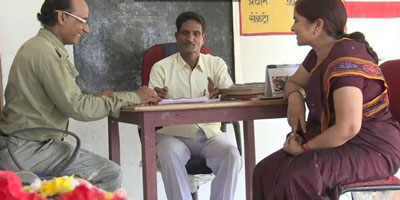1 Perspectives on teacher development
Teaching is not a static profession but one that changes with the influence of technology, the ever-changing body of knowledge, pressures of global economics and social pressures. This means that ongoing updating and development of teaching approaches and skills is needed to address these changes. Having the ability to change is essential for teachers.
In order that the pedagogic vision in the National Curriculum Framework (NCF, 2005) is realised by teachers in our classrooms, it is important that the professional development of teachers takes place with the onus of responsibility falling on the school leader. Key Area 3 of the National Programme Design and Curriculum Framework (2014) focuses on transforming the teaching–learning process into child-centred creative engagement by developing the capabilities of school leaders. The school leader thus has a critical role in planning, monitoring and enabling the continuous professional development (CPD) of every teacher in their school.
Christopher Day (1999) argues that teachers’ professional development should be seen as a lifelong activity that focuses on both their personal and professional lives, and on the policy and social context of the workplace. This is an important consideration for the school leader, as the teachers will always be learning just as the students will always be learning. There is no end point when all knowledge and skills have been acquired.
Figure 1 Teachers discussing development needs.
While professional development often exists in centralised courses, school-based professional development offers many benefits and can help overcome barriers to teachers engaging with their professional development that centralised courses cannot offer; for example, by:
- addressing the professional development needs of the individual teacher
- addressing the specific needs and characteristics of the school
- fitting in with the specific focuses for development of the school
- making it easier to build capacity and skills by getting a group of teachers working together
- being less disruptive to teaching timetables, as teachers can work on their professional development while teaching
- providing the possibility of immediate feedback on student learning, as the professional development can take place in the classroom
- giving school leaders more control over the quality and focus of the professional development.
This unit focuses on in-service teacher development through school-based activities that promote effective learning and teaching as well as wider school improvement.
The next activity aims to help you think about identifying what changes in teaching practice may be required and choosing between professional development courses or in-school professional development, using NCFTE (2009) as guidance.
Activity 1: Review of NCFTE (2009)
Chapter 3 (‘Transacting the curriculum and evaluating the developing teacher’) of the NCFTE (2009) identifies current practice in teacher education and how this could become more process-based. Take a look at some of the characteristics identified in the NCFTE which are described below in Figure 2. Mark on the continuum line where you feel your school mostly operates in relation to the development of teachers: Is it mostly to the left or mostly to the right? Remember to focus on the teachers as the learners, not the students, when you do this activity.
| Theory as a ‘given’ to be applied in the classroom | _____________________ | Conceptual knowledge generated, based on experience, observations and theoretical engagement
|
| Knowledge treated as external to the learner and something to be acquired | _____________________ | Knowledge generated through critical enquiry in the shared context of teaching, learning, personal and social experiences
|
| Learners work individually on assignments, in-house tests, field work and practise teaching | _____________________ | Learners encouraged to work in teams, undertaking classroom and learners’ observations, interaction and projects across diverse courses; group presentations encouraged
|
No ‘space’ to address learners’ assumptions about social realities, the learner and the process of learning
|
_____________________ | Learning ‘spaces’ provided to examine learners’ own position in society and their assumptions as part of classroom discourse |
No ‘space’ to examine learners’ conceptions of subject knowledge
|
_____________________ | Structured ‘space’ provided to revisit, examine and challenge (mis)conceptions of knowledge |
Footnotes
Figure 2 NCFTE characteristics on a continuum.Discussion
This activity aimed to help you to start thinking about how far your school currently works towards the practices highlighted and advocated in NCFTE (2009) to make ‘reflective practice the central aim of teacher education’ and to recognise that ‘[pedagogical knowledge has to constantly undergo adaptation to meet the diverse needs of diverse contexts through critical reflection by the teacher on his/her practices’ (pp. 19–20). Ideally your marks should all end up on the left-hand side where learning is active and interactive. The reality may be that your marks are on the right or in the middle. This gives you a direction in which to travel (and discuss).
As a school leader you are responsible for school improvement and thus for student learning outcomes and staff development. Ideally, you will be working with your teachers to develop their knowledge through their daily experience of teaching in a way that encourages your teachers to share their knowledge and skills with an openness that also allows them to observe each other and discuss issues together in a number of curriculum sites (farm, workplace, home, community and media).
To facilitate this, as a school leader, you will need to create the appropriate safe ‘spaces’, where teachers feel they can share their experiences, and where experimenting is encouraged and ideas are valued.
What school leaders can learn in this unit

